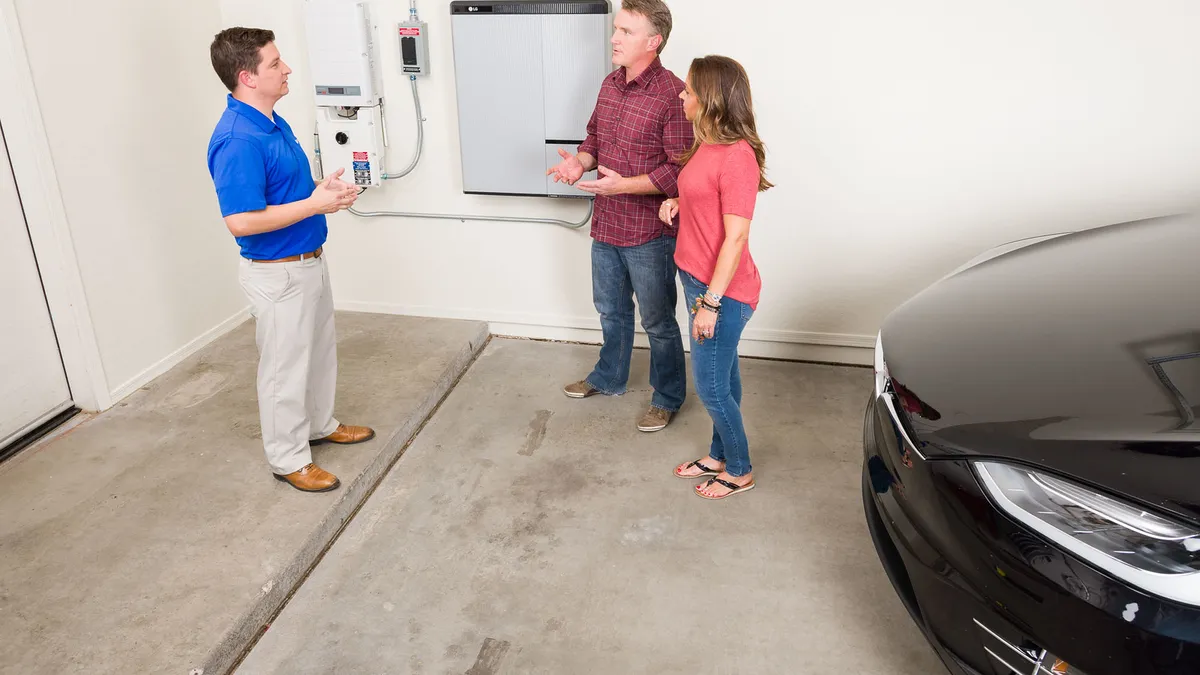Dive Brief:
- California's three large investor-owned utilities last month called for dropping automatic demand response (Auto-DR) incentives for battery energy storage controls, saying developers are not currently focused on those incentives.
- In a final proposal required by the California Public Utilities Commission, utilities noted most battery integrators manage batteries from their cloud, thus specific or add-on Auto-DR controls or communications "are not necessary" to participate in demand response programs.
- The IOUs also say they have concerns that adopting Auto-DR guidelines for battery controls "could result in double payments" by ratepayers, as it can be difficult to isolate the incremental or Auto-DR-only portion of the costs of the battery controls.
Dive Insight:
California regulators had tasked the state's large utilities with answering six questions on battery storage and automated demand response, and for each one, the companies indicated incentives for Auto-DR controls should be cut.
The April 15 filing was made jointly by Southern California Edison, San Diego Gas & Electric and Pacific Gas & Electric.
The three utilities said that based on a January teleconference and workshop on the issues, stakeholders preferred "changing rate structures and DR program designs rather than changing the current Auto-DR Guidelines for battery energy storage controls."
Automated demand response programs allow utilities to communicate directly with Auto-DR-capable equipment to reduce load when needed. But batteries produced today tend to have control technology already installed and do not require incentives for that capability to be added.
The utilities said the stakeholder process helped determine that most batteries are equipped with controls, either by the manufacturer or installer, "which allows the battery to be controlled automatically for load management purposes by third-parties or customers."
Utilities also noted that under the state's Self-Generation Incentive Program (SGIP), IOUs cannot enforce or ensure customers are not receiving multiple incentives for the same thing.
The SGIP allows Auto-DR control costs as an allowable cost for utilities, the IOUs explained in a January presentation, but lacks more specific information about allowable costs.
"Specifically, it is difficult to isolate the incremental or Auto-DR only portion of the costs of the battery controls which is needed to ensure ratepayers are only paying for the incremental costs of the controls and that ratepayers are not paying for the same thing twice," the utilities told regulators.
California is continuing to develop demand response and load management programs in order to integrate more renewable energy. Regulators are considering changes to distributed energy storage plans proposed by the state's three big utilities that could direct them to run open solicitations, including independent developers.
Last summer, regulators extended the 2018-2022 demand response programs application proceeding after determining more time to complete an analysis of the demand response auction mechanism was required. The commission extended the deadline to July 17, 2019, and expanded the scope in order to "determine the next steps for the demand response auction mechanism."















